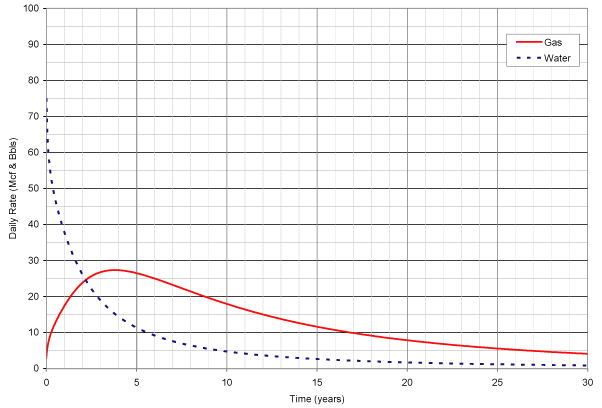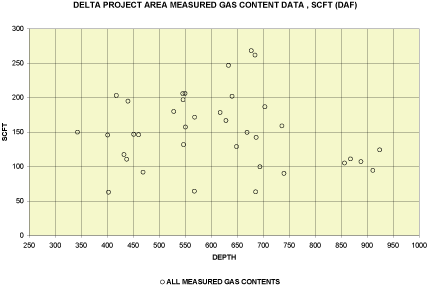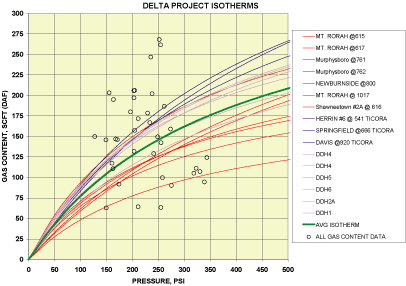[Letterhead of BPI Energy Holdings, Inc.]
November 13, 2008
By EDGAR and Fax
United States Securities and Exchange Commission
Division of Corporation Finance
Mail Stop 7010
100 F Street, N.E.
Washington, D.C. 20549-7010
Attention: Christopher J. White
Ronald M. Winfrey
| | | |
| RE: | | BPI Energy Holdings, Inc. |
| | | Form 10-K for Fiscal Year Ended July 31, 2007 |
| | | Filed October 29, 2007 |
| | | Response Letter Dated August 27, 2008 |
| | | File No. 001-32695 |
Dear Mr. White and Mr. Winfrey,
We have received your additional comments to the above referenced filing set forth in your letter dated October 30, 2008 and addressed to Mr. James G. Azlein, Chief Executive Officer and President of BPI Energy Holdings, Inc. (the “Company”). To assist with our response to your comments, we have engaged Schlumberger Technology Corporation. This letter is on behalf of the Company, and the Company’s responses set forth below correspond with the headings and numbers in your letter. For convenience of review, this letter includes your comments in bold and/or italics with the Company’s responses below.
Form 10-K for the Fiscal Year Ended July 31, 2007
Engineering Comments
Status of CBM Operations, page 8
| | 1. | | Your response to comment number 2 to our letter of July 31, 2008 states, “Average gas production from these 84 wells for the fiscal year ended July 31, 2008 was approximately 70% of projected production in the Company’s July 31, 2007 reserve report. The forecasted production of PDP wells at the Southern Illinois Basin project is a factor of the type curve developed by Schlumberger based on a reservoir simulation model which utilizes known reservoir data and history matching of zero-time production data of existing producing wells. This type curve was then applied to all PDP wells based on their producing rate at July 31 2007.” Please explain to us the steps you have taken to bring your proved reserve projections in closer agreement with production. Furnish to us a list of the referenced reservoir parameters values and type curve as well |
| | | | as a description/identity of the CBM fields used in history matching. Tell us whether initial gas saturations were determined by desorption techniques. |
Provided below are our responses to the SEC request for further explanation.
Please explain to us the steps you have taken to bring your proved reserve projections in closer agreement with production.
For the July 31, 2007 reserve report, we used production data from 84 producing wells in the Southern Illinois (Delta) project. Production was normalized (zero-time) and history matched, in a manner similar to that performed in 2005 and 2006. Average reservoir data was updated to reflect the average properties of the wells used in the analysis. The history match of the average normalized production resulted in a type-curve that was utilized to forecast future production from PDP wells by adjusting the curve (vertically and horizontally) to fit the actual production rate from each well. Subsequent to this, a second type curve was developed to forecast future production from the PUD wells. This type curve used the reservoir simulation results of the history match and was slightly modified to account for an increase in completed coal thickness from 10.7 feet (average PDP wells) to 13.8 feet (PUD wells). The average normalized production and the resulting type curves obtained from the 2007 analysis showed a lower peak production rate, a longer time period to reach peak production, and a longer period of stable production before initiation of the decline period. Resulting total proved reserves were only slightly reduced, as the reduction in peak production was offset by the longer period of stable production.
Furnish to us a list of the referenced reservoir parameters values and type curve as well as a description/identify of the CBM fields used in history matching.
We used production data from the 84 producing wells in the BPI Southern Illinois (Delta) project. Reservoir parameters used in the volumetric and reservoir simulation analysis for the PUD well forecast are presented below inTable 1. The resulting type curve from this analysis is shown inFig. 1.
| | | | | |
| Reservoir Property | | Value |
| Total Coal Seam Thickness (feet) | | | 18.2 | |
| Potentially Perforated Coal Seam Thickness (feet) | | | 13.8 | |
| Reservoir Pressure Gradient (psi/ft) | | | 0.433 | |
| Ash plus Sulfur (percent) | | | 14.2 | |
| Moisture (percent) | | | 3.73 | |
| Average Density (g/cc) | | | 1.55 | |
| In-situ Coal Tonnage per Acre-ft (tons) | | | 2,069 | |
| Dry, Ash-Free Coal Tonnage per Acre-Ft (tons) | | | 1,698 | |
| Total Dry, Ash-Free Coal Tonnage per Project Acre (tons) | | | 30,903 | |
| Perforated Dry, Ash-Free Coal Tonnage per Project Acre (tons) | | | 23,432 | |
| Estimated Completion Mid-point Depth (feet) | | | 601 | |
| Completion Mid-point Pressure (psi) | | | 260 | |
2
| | | | | |
| Reservoir Property | | Value |
| Well Unit Spacing (acres) | | | 64 | |
| Langmuir Pressure (psia) | | | 389.76 | |
| Dry, Ash Free Langmuir Volume (scf/ton) | | | 374.41 | |
| Dry Ash Free Gas Content (scf/ton) | | | 150 | |
| Total Gas in Place per Acre (scf) | | | 4,632,312 | |
| Perforated Gas in Place per Acre (scf) | | | 3,512,413 | |
| Total Gas in Place per Well Unit (scf) | | | 296,467,978 | |
| Potentially Perforated Gas in Place per Well Unit (scf) | | | 224,794,401 | |
Table 1 — Average reservoir properties used in the 2007 reservoir simulation forecasts and estimated gas in place for the PUD wells.
Figure 1 – PUD well type-curve obtained from the history matching and reservoir simulation analysis.
Tell us whether initial gas saturations were determined by desorption techniques.
A total of 37-canister gas content measurements were available for this study, 30 of which were reported from 6 core holes that were somewhat evenly located throughout the project area. One additional publicly available gas content data set containing 7 measurements was incorporated into this analysis primarily to confirm data provided by the project. These gas content data display a normal scatter, when viewed as a function of gas content versus depth or pressure, which is normally expected for the Illinois basin coals,Fig. 2.
3
Figure 2 – Gas content (dry, ash-free) versus depth for coal samples recovered in the Delta Project area.
A total of 16 laboratory Langmuir sorption isotherms taken from most of the coals sampled for gas content were examined. Average Langmuir constants were determined from these data and then used as a primary tool for the later determination of individual coal gas contents. Incorporating the average of reported reservoir pressure gradients, this average isotherm appears to very reasonably “fit” the expected “scatter” of measured gas contents,Fig. 3. The majority (60 percent) of measured gas content values fall above this average isotherm, while 40 percent of measured gas content values fall below this average isotherm.
Figure 3 – Gas content and sorption isotherms (dry, ash-free) versus reservoir pressure for coal samples recovered in the Delta Project area.
4
Financial Statements, page F-2
Summary of Changes in Proved Reserves (Unaudited), page F-32
| 2. | | FAS 69, paragraph 11 requires “appropriate explanation of significant changes” due to six specified items. Your response to comment number 4 appears to include important information pertaining to significant changes in your proved reserves due to “Extensions and Discoveries” as well as “Revisions of Previous Estimates.” Please revise future filings to comply with FAS 69 by including this information in your supplemental proved reserve disclosures. |
We will revise future filings to comply with FAS 69 by including the information referenced above in our supplemental proved reserve disclosures.
In connection with these responses to your letter, the Company acknowledges that:
| | • | | The Company is responsible for the adequacy and accuracy of the disclosure in the filing; |
| |
| | • | | Staff comments or changes to disclosure in response to staff comments do not foreclose the Commission from taking any action with respect to the filing; and |
| |
| | • | | The Company may not assert staff comments as a defense in any proceeding initiated by the Commission or any person under the federal securities laws of the United States. |
If you have any questions regarding these responses, please call me at (440) 248-4200.
Very truly yours,
| | | |
/s/ James G. Azlein James G. Azlein | | |
| President and Chief Executive Officer | | |
| BPI Energy Holdings, Inc. | | |
5


